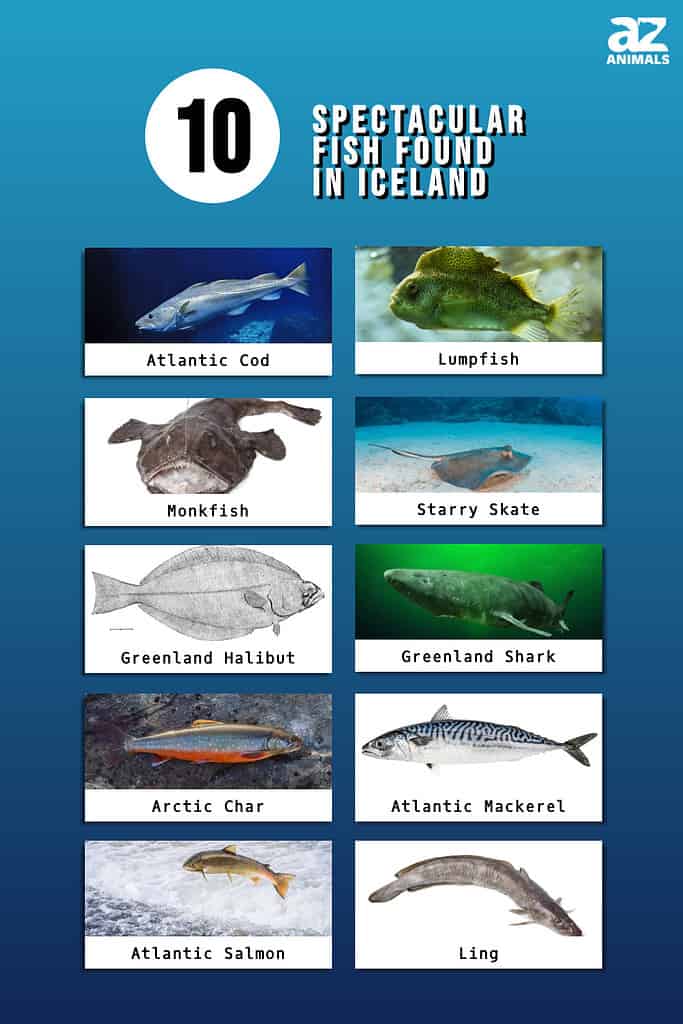
Iceland is an island country a little bigger than Ireland. It is located northwest of the United Kingdom, west of Norway, and southeast of Greenland. Aside from the main island, hundreds of smaller islands and beautiful fjords are scattered throughout the region. The cool crisp waters of Iceland provide habitats for many different fish species, including some very unique looking specimens! Some of the fish in Iceland are commercially caught for food, others are sport fish, while others are simply fascinating creatures. Read on to discover the spectacular fish found in Iceland!
1) Atlantic Cod
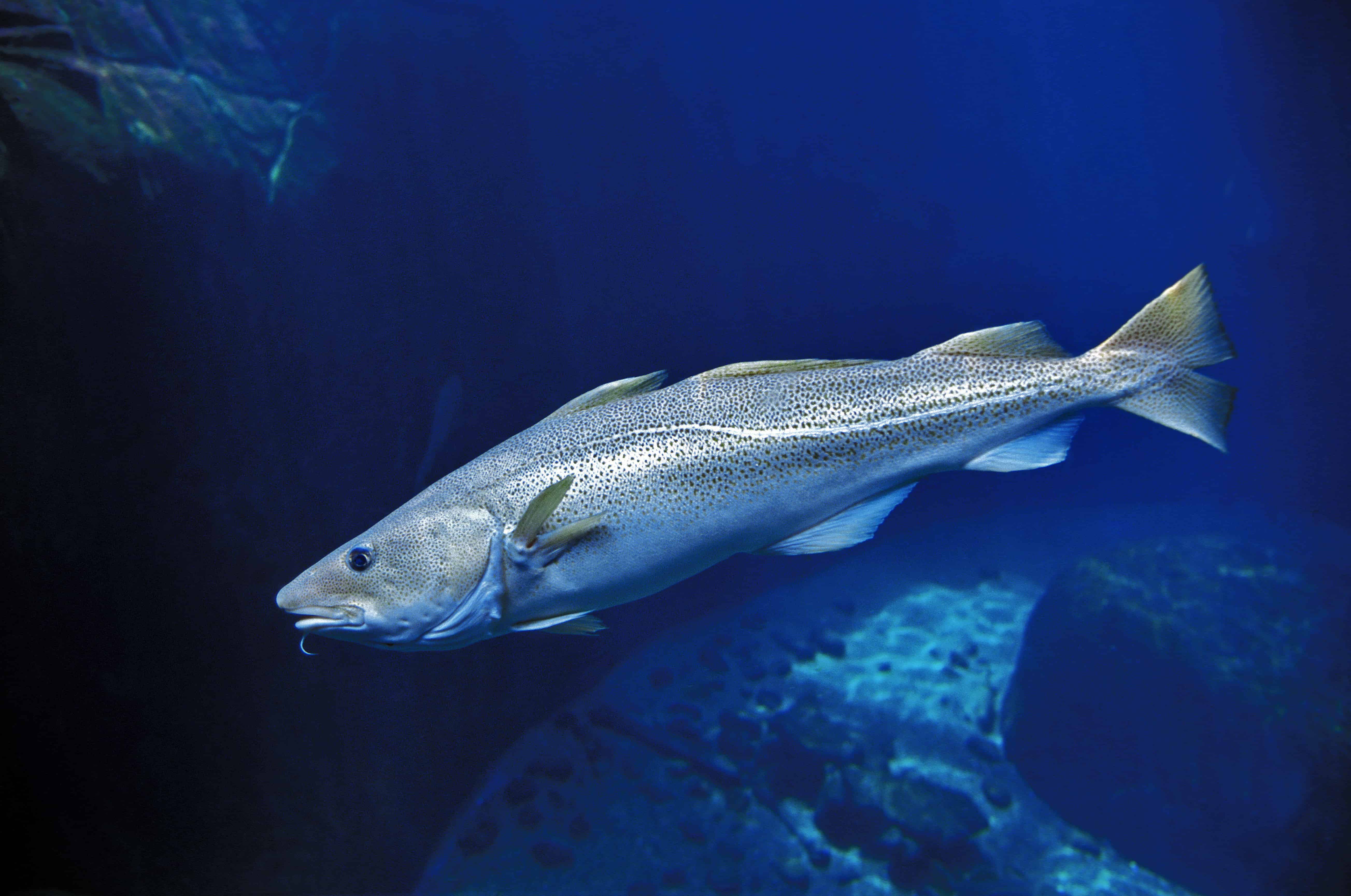
Atlantic cod are medium-sized fish, commonly reaching lengths of 1 ½ -3 feet.
©slowmotiongli/Shutterstock.com
One of the most iconic fish of Iceland is the Atlantic cod, scientific name Gadus morhua. Not only are they an important species in their marine habitat, but they are also a very tasty fish! Atlantic cod are medium-sized fish, commonly reaching lengths of 1 ½ -3 feet but can get to be more than 6 feet long. They have three dorsal fins and a unique barbel that hangs off their chin. The upper half of their bodies are gray, brown, or green with dark spots, and the bottom half is cream or off white. In Iceland they are most commonly fished off the southwest coast. They are considered a demersal codfish, meaning they are bottom dwellers, living near the bottom of the ocean where they feed on smaller fish.
2) Lumpfish
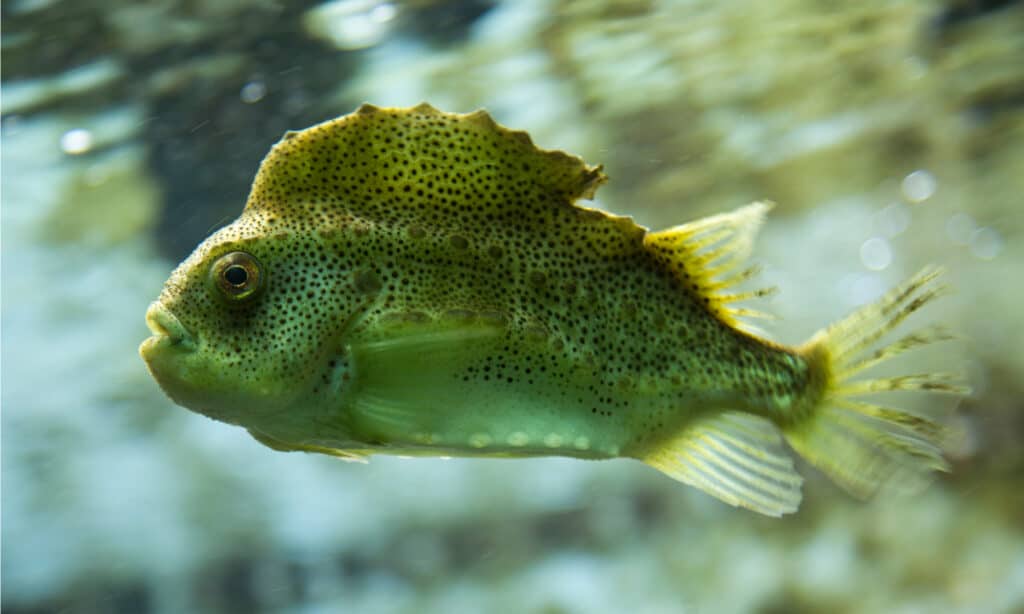
Appropriately named, the lumpfish has two rows of wart-like protrusions.
©Podolnaya Elena/Shutterstock.com
The color changing lumpfish (Cyclopterus lumpus) is one of the most unique fish in Iceland! Lumpfish don’t have scales, only a leathery skin covering their balloon shaped body. Appropriately named, this fish’s lumpy-looking skin has two rows of wart-like protrusions along the sides. Males turn orangish-red during breeding time and females change to a blue green. Females are larger than males, but there is a wide range in size depending on the species. In general, they can range from 1 inch to 24 inches. The lumpfish found off the coast of Iceland are usually in the 11–22-inch range, with the females measuring 14-22 inches and the males measuring 11-16 inches.
These fish are somewhat awkward swimmers, with fan-like pectoral fins. Their pectoral fins have suction cups that help them stick to rocks or other hard surfaces. In Iceland you can find lumpfish in the open ocean, as well as closer to shore during the spawning season.
3) Monkfish
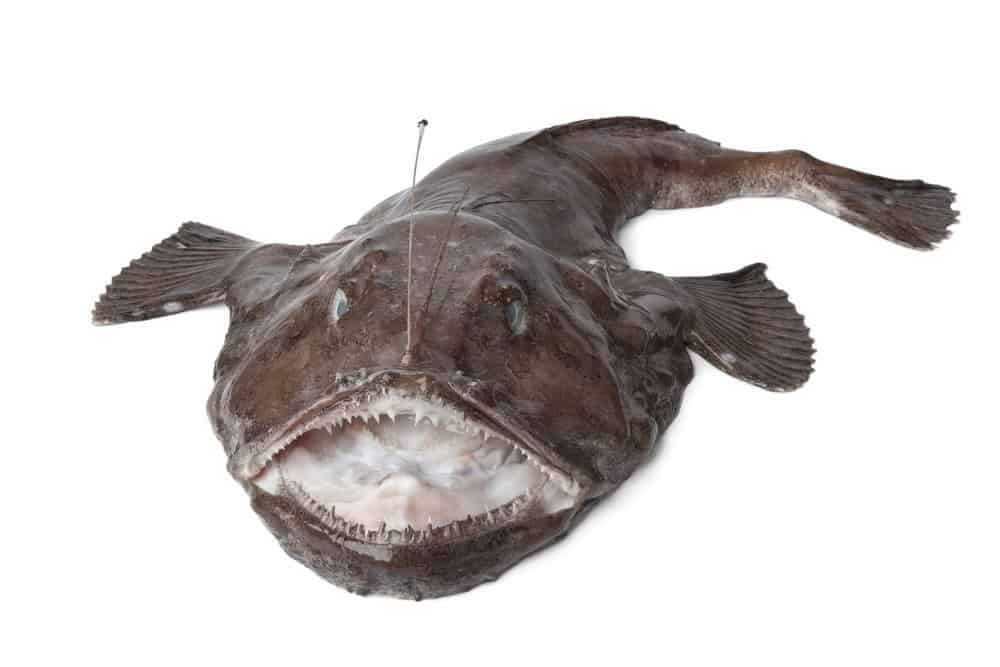
The highly interesting monkfish are spectacular due to their large mouths and remarkable hunting method.
©Picture Partners/Shutterstock.com
Monkfish (Lophius piscatorius) have a large, wide flat head, with a body that tapers towards the tail. They are spectacular due to their large mouths and remarkable hunting method. Hiding at the bottom of the ocean, they camouflage themselves amidst the sand while using an antenna on the top of their head to lure prey. Once an unsuspecting fish gets close enough, the monkfish darts out from the sand and snatches its dinner.
They have the ability to change color to better blend with their surroundings, but they tend to be a dark brown or olive green. Monkfish can grow up to 78 inches, but those living off the coast of Iceland are usually about 61 inches. They can be found off the southern coast of Iceland and are very adaptable to both shallow water and depths of 1,000 meters or more.
4) Starry Skate

The stingray-resembling starry skate is one of the most common cartilaginous fish found off the coast of Iceland.
©A Cotton Photo/Shutterstock.com
The starry skate (Amblyraja radiata) is similar to a stingray. They are cartilaginous fish, which means their skeletons contain only cartilage instead of bone. The starry skate is one of the most common cartilaginous fish found off the coast of Iceland. They are usually around 28 inches long but can reach a maximum length of 30 inches. They are tan to brown, blending in nicely with the sandy bottom of the ocean. Because of the ridged line down their back, they are sometimes called thorny skates. Icelandic waters are a perfect habitat for them because they prefer cooler temperatures.
5) Greenland Halibut
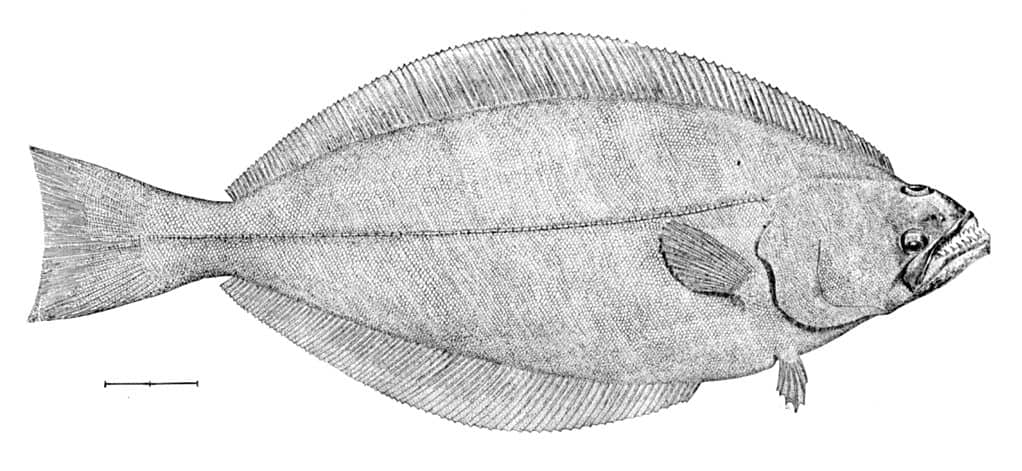
The left eye is closer to the top of the forehead than to the side, giving Greenland halibut an unusual appearance.
©public domain – License
In stark contrast to bumpy lumpfish, Greenland halibut (Reinhardtius hippoglossoides) are flatfish. They have a long dorsal fin that spans almost the entire length of their body, as well as a long anal fin that covers more than half the underside. But their most unique feature is the placement of their eyes. The left eye is closer to the top of the forehead than to the side, giving them an unusual appearance. Some flatfish, like flounder, have both eyes on the same side of the head!
In Iceland, they prefer deep cold waters. They usually weigh between 25-50 pounds and can grow up to 47 inches long. The Greenland halibut (also called the Greenland turbot) is one of the most valuable flatfish for Iceland’s fishing industry.
6) Greenland Shark (Somniosus microcephalus)
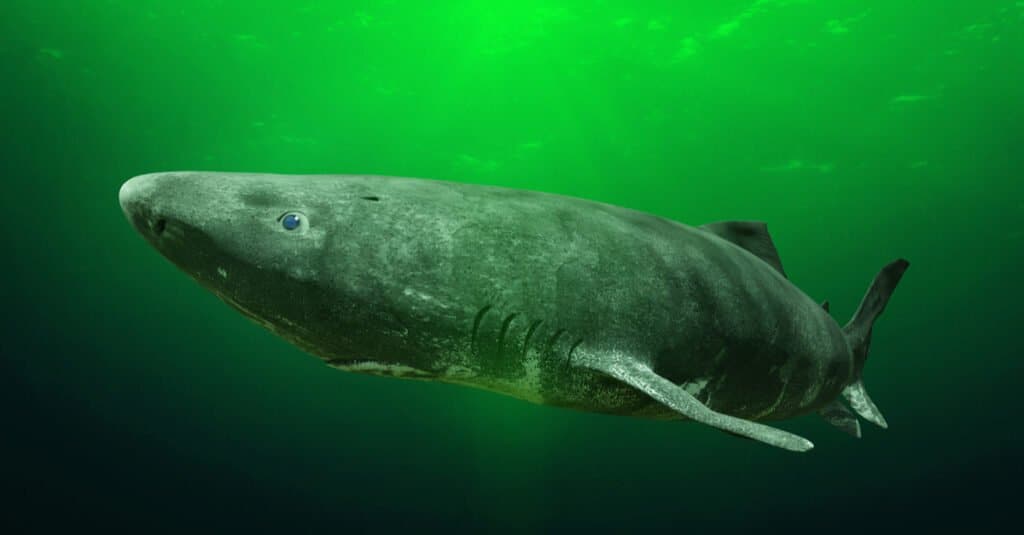
Advanced carbon dating reveals Greenland sharks have lifespans of 250-500 years!
©Dotted Yeti/Shutterstock.com
Another cartilaginous fish on our list is the Greenland shark. Fascinatingly, this shark has the longest lifespan of any known vertebrate! Advanced carbon dating reveals these fish have lifespans of 250-500 years! What is the secret to their longevity? Cold and slow. These slow swimmers spend much of their time in the deep cool waters of the ocean.
Greenland sharks are large sharks, with some reaching lengths of 24 feet but 18-21 feet is more common. Unfortunately, a parasite called the Ommatokoita elongate targets their eyes and can sometimes destroy their cornea. However, due to their remaining senses, even blind Greenland sharks can manage to find fish, seals, and squid.
In Iceland, Greenland shark is a delicacy called Hakarl. The shark has to be carefully treated to make it safe for consumption, but then it is specially prepared and served as a traditional dish.
7) Arctic Char
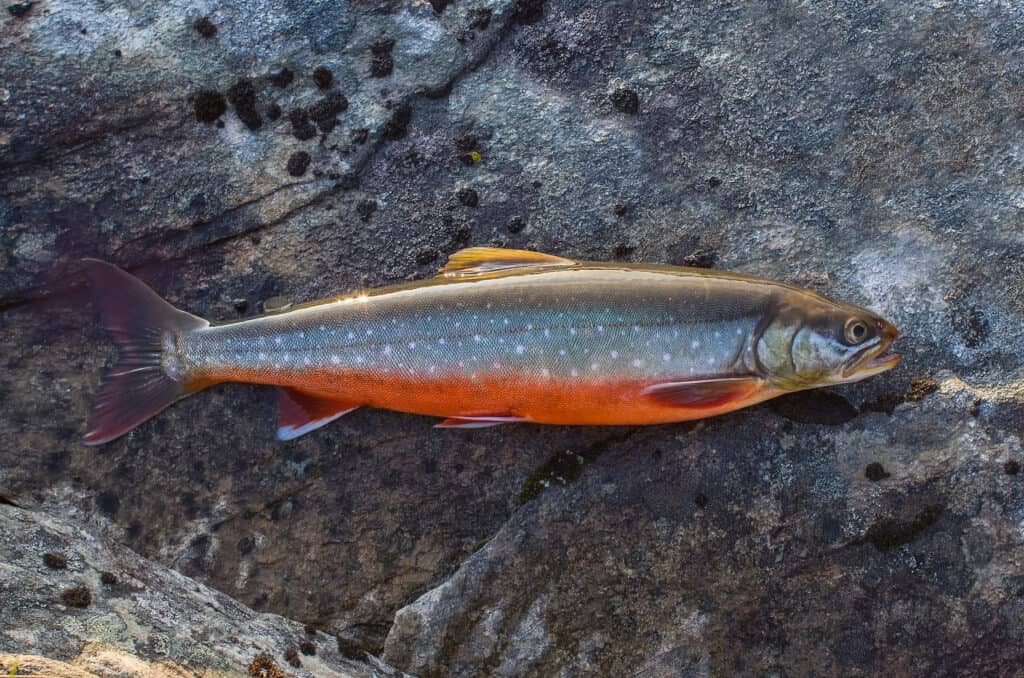
Beautiful Arctic char vary in color, with blue to brown backs and orange to pink bellies.
©FedBul/Shutterstock.com
Arctic char (Salvelinus alpinus) are trout-like fish that prefer cool waters. In contrast to other Arctic-named animals, like the Arctic hare and Arctic fox, the Arctic char is not white. They vary in color, with blue to brown backs and orange to pink bellies, and the males’ fins turn a bright shade during spawning season. Arctic char are around 14-17 inches long.
In Iceland, Arctic char can spawn in freshwater, both in lakes and rivers, and they spend their winters in these freshwater habitats. In early spring, they head out to sea to feed along the coast, before returning to their freshwater habitats in mid-July. Some Arctic char are non-migratory and remain in the same lake for their lifetime. In Iceland, they are frequently served as food, in ways similar to trout and salmon.
8) Atlantic Mackerel
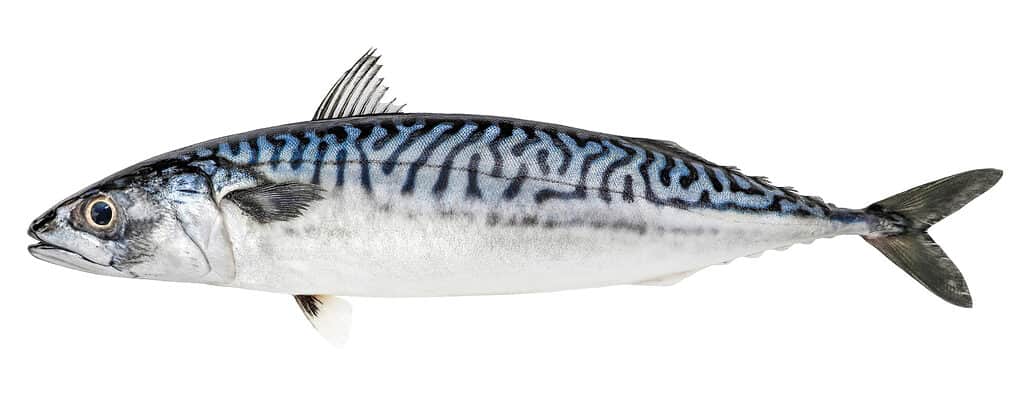
Interestingly, the Atlantic mackerel doesn’t have a swim bladder, so it has to constantly stay moving!
©Nosyrevy/Shutterstock.com
The Atlantic mackerel (Scomber scombrus) is a spectacular fish with green and black wavy striped backs. They frequently swim in schools, squirming their way through open waters. Atlantic mackerel are a little longer than a foot and can get up to 16 ½ inches. Interestingly, this type of fish doesn’t have a swim bladder, so it has to constantly stay moving! In the last 20 years, the Atlantic mackerel has become more populous in Iceland during migratory periods, as their range has gradually spread further north.
9) Atlantic Salmon

These silvery fish grow darker as they age, with the oldest appearing almost black.
©Kevin Wells Photography/Shutterstock.com
Atlantic salmon (Salmon salar) are a silvery, torpedo shaped fish with black spots. They grow darker as they age, with the oldest appearing almost black. Atlantic salmon in Iceland start out in freshwater, where they live the first couple years of their lives. Then they head out to the ocean for a time, before heading back to the place where their life began. Pacific salmon are known for dying shortly after spawning, but Atlantic salmon can spawn multiple times in more than one reproductive season.
The average Atlantic salmon is between 8-12 pounds, but as they get older, they can reach weights of 10-20 pounds and lengths of 3 feet or more. The largest Atlantic salmon on record was a whopping 109 pounds!
10) Ling
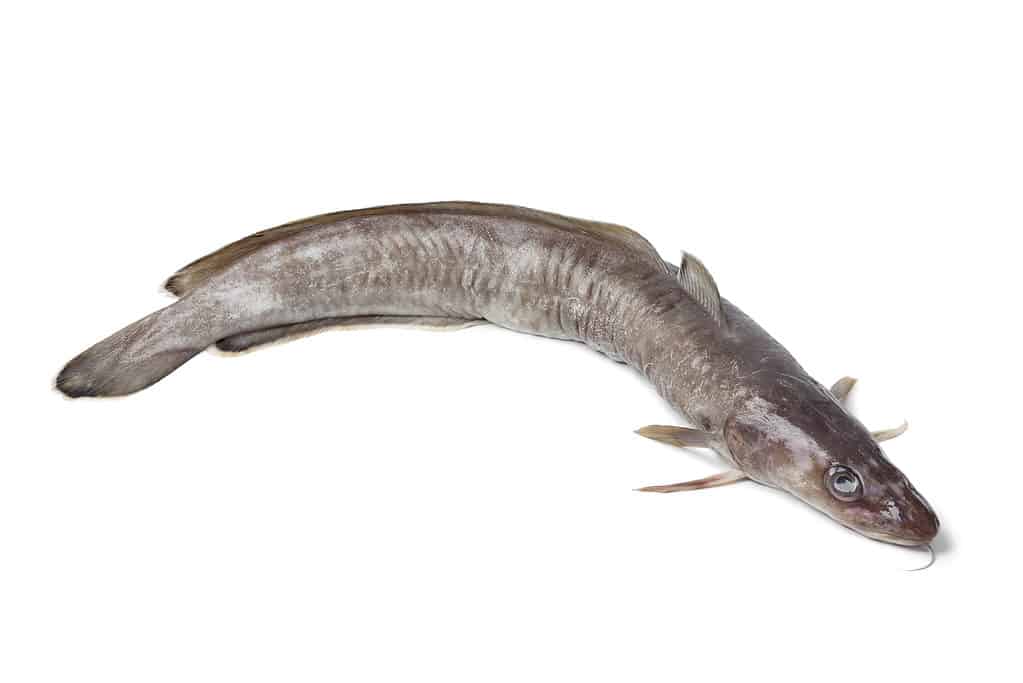
A single sensory barbel casually hangs off the ling’s bottom lip.
©Picture Partners/Shutterstock.com
Ling is an abnormally long, eel-like slender fish with lengthy dorsal and anal fins. A single sensory barbel casually hangs off its bottom lip. It is the longest cod-like fish and can reach lengths of 6 ½ feet but more commonly falls in the 2-3 ½ foot range. Surprisingly, ling can live to be 25 years old!
With the crisp, cool waters of Iceland, there are numerous other fish species worth learning about. We hope this list sparks your interest in the amazing fish found in Iceland!
Summary of the 10 Spectacular Fish Found in Iceland
Here are 10 Spectacular Fish Found in Iceland:
| Rank | Fish in Iceland |
|---|---|
| 1 | Atlantic Cod |
| 2 | Lumpfish |
| 3 | Monkfish |
| 4 | Starry Skate |
| 5 | Greenland Halibut |
| 6 | Greenland Shark |
| 7 | Arctic Char |
| 8 | Atlantic Mackerel |
| 9 | Atlantic Salmon |
| 10 | Ling |
The photo featured at the top of this post is © Dotted Yeti/Shutterstock.com
Thank you for reading! Have some feedback for us? Contact the AZ Animals editorial team.







